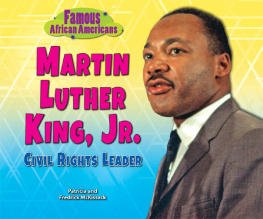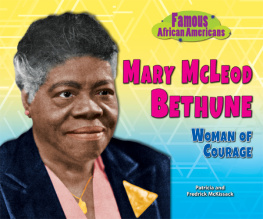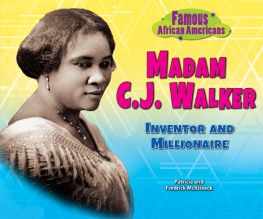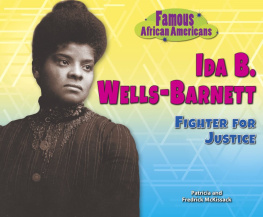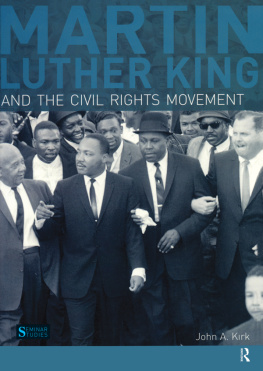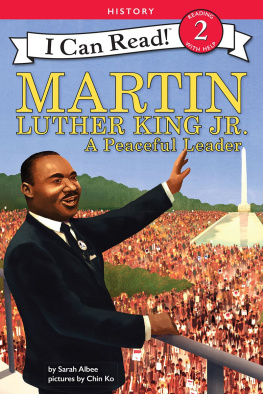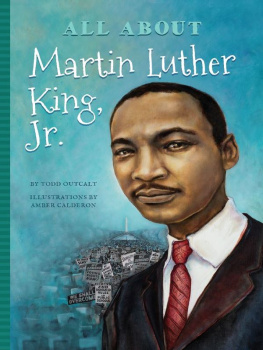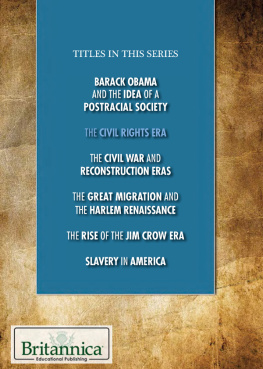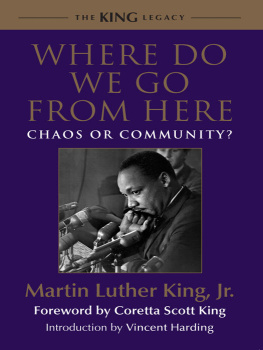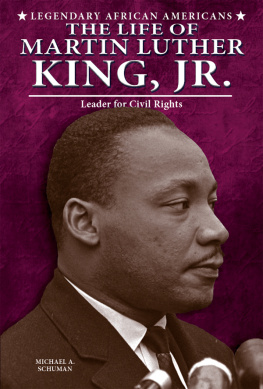A DREAM FOR PEACE
AS A BOY, MARTIN LUTHER KING, JR. HAD TO GIVE UP HIS SEAT ON A BUS TO A WHITE PERSON. HE KNEW THIS WAS NOT FAIR. MARTIN WENT TO SCHOOL AND BECAME A PREAC HER. HE WAS A LEADER WHO SPOKE OUT FOR PEACE AND FAIR TREATMENT FOR ALL PEOPLE. READ ABOUT MARTINS LIFE IN THE FAMOUS AFRICAN AMERICANS SERIES.
ABOUT THE AUTHORS

Patricia and Fredrick McKissack have written over one hundred books about the African-American experience. They have won countless awardsincluding the Coretta Scott King Awardand received much critical acclaim, all the while bringing enjoyment and information to young readers.

Image Credit: AP Images/Chick Harrity
Martin Luther King, Jr., was a preacher and an activist who believed in equal rights for everyone.
Martin Luther King, Jr., was born on January 15, 1929. He grew up in a big house on Auburn Avenue in Atlanta, Georgia.
Martin Luther King, Sr., was a Baptist preacher. Everybody called him Daddy King. He was a strong, proud man who taught his children to be proud also. Alberta King was Mother Dear to her three children.
Young Martins family called him M.L. But his friends called him Tweed, because he wore tweed suits. His friends also called him Will Shoot, because whenever the basketball was passed to him, he would shoot it.
There was also a serious side to Martin. He questioned segregation. Segregation meant that black people were treated differently from other people. Why did they have to ride on the back seats of buses? Use separate public bathrooms? And drink from different water fountains? Martin was told: Because you are colored!
Thats the way things were in the South when Martin was growing up. Once, Martin made a speech and won first place. He and his teacher rode the bus home. The bus filled up. So the driver told all the black riders that they had to give up their seats to white passengers. When Martin asked why, he was told: Because you are colored!
Even though Martin Luther King, Jr., was young, he felt segregation was not a good way for Americans to live. Black and white people should have the same rights.

Image Credit: Ned O.
Growing up in the South, Martin and other black people were not treated the same as white people.

Image Credit: Ned O.
Dr. Benjamin Mays became Martins close friend. Dr. Mays helped Martin decide what he wanted to do with his life.
Martin still had fun growing up. He loved the good soul-food meals prepared by his grandmother. He did so well in school that he graduated from high school when he was only fifteen. In the fall of 1944, he entered Morehouse College in Atlanta.
What was Martin going to be? Daddy King said he should be a preacher. Martin wasnt so sure about that. He was still very young. He had a lot of questions about people, God, and what he would do in life.
A very important person in his life during that time was Dr. Benjamin Mays, the president of Morehouse. Dr. Mays was a very good friend and helped Martin look for his own answers.
By the time he finished Morehouse in the class of 1948, Martin knew he wanted to be a preacher. So he went to Crozer Theological Seminary in Chester, Pennsylvania.

Image Credit: AP Images
Martin Luther King, Jr., third from left, sits at an assembly at Morehouse College in 1948.
At Crozer, Martin read about Mohandas Gandhi, who helped India gain freedom from Englandpeacefully. Martin also read the writings of Henry David Thoreau, who said unfair laws should not be obeyed. Martin studied the words of Jesus and other holy leaders. His studies helped him find ways to fight prejudice peacefully.
There was racial prejudice in the North as well as in the South. But whenever it came up, Martin handled it peacefully. His classmates looked up to him, and even his enemies became his friends.
Love and peace were becoming very important words in Martin Luther King, Jr.s life.
After finishing Crozer Seminary in 1951, Martin went to Boston University. While living in Boston, Martin met Coretta Scott from Alabama. She was studying music at a school in Boston.
After their first date, Martin asked Coretta to marry him. She thought he was joking, but he wasnt. She was everything I wanted in a wife, he told his best friend. And on June 18, 1953, Martin and Coretta were married.
Martin got his advanced degree in theology, and Coretta finished her studies, too. Then the Kings had to decide where they would live. A church in the South had asked Dr. King to come there. Mrs. King wanted to stay in the North at first. The South was still very segregated. But at last, they decided to go back down home.

Image Credit: AP Images/Gene Herrick
I knew immediately that he was special, Coretta Scott when she met Martin. They had four children, Yolanda, Martin III, Dexter, and Bernice.

Image Credit: Ned O.
Dr. King led a peaceful bus strike in Alabama. The protest worked! Black riders would have the same rights as white riders.
In December 1954, the Reverend Dr. Martin Luther King, Jr., preached his first sermon as the pastor of Dexter Avenue Baptist Church in Montgomery, Alabama.
A year passed. It was December 1, 1955. An African-American woman named Rosa Parks got off from work and boarded a public bus. The bus filled, so she was asked to give up her seat to a white passenger. Mrs. Parks refused. At that time, it was against the law for Mrs. Parks to refuse to give up her seat to a white person when the bus was crowded. So she was taken to the police station.
Black leaders in Montgomery called a meeting that evening at Dr. Kings church. It was decided that a bus strike might help to change the unfair laws. Dr. King was asked to be the leader. He said he would, but only if the people taking part in the bus strike were peaceful.
For months and months, black people of Montgomery didnt ride the public buses. One year later, the bus company agreed to let all people, black and white, sit where they wanted.

Image Credit: Ned O
In the 1960s, students held sit-ins at lunch counters. Often they were called names and had things thrown on them.

